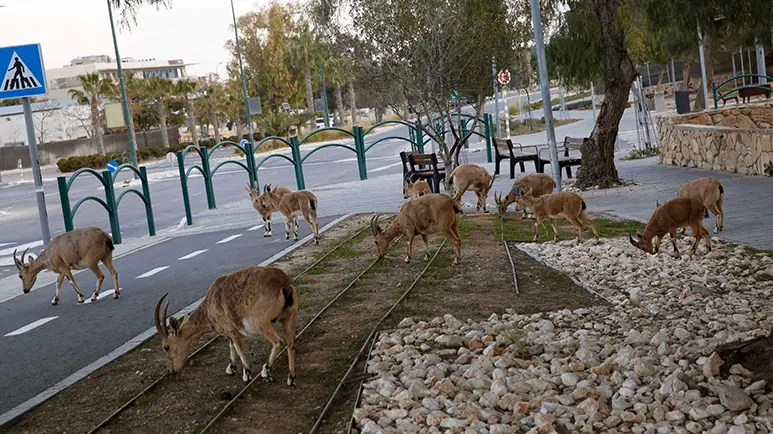
When the COVID-19 pandemic hit us way back in 2020, several regions across the world went into lockdown. Around the same time, several stories of wildlife sightings at unusual places surfaced. A group of animal movement researchers tells us more about what could have caused this.
At some point in 2020, more than half the world's population was said to have been under lockdown. With hardly any human movement, many bustling places became quiet. That was when "cougars were seen prowling through the suburbs of Santiago, Chile, golden jackals became more active during the day in Tel Aviv, Israel, and dolphins appeared in the normally busy harbour of Trieste, Italy". This made animal movement researchers wonder if human movement impacted animal movement or if humans were simply noticing animal presence better during the pandemic. And so, they commenced the COVID-19 Bio-Logging Initiative. Many of the researchers were already studying animals and recording their movements through GPS tags, etc. The devices continued their work during the lockdown too, helping them compare animal movement during and before the pandemic.
Their data showed movements for thousands of animals, "from 43 species including elephants, giraffes, bears, deer and cougars". The researchers could "look at how their behaviour and movement patterns changed during the lockdowns in 2020 compared to the same period one year earlier”. Both humans and the structures (including buildings and vehicles) they build can impact animal mobility, and the study showed this- "mammals were 36 per cent closer to roads during lockdown, and that their movement distances over ten days were 73 per cent longer during strict lockdowns compared to the same period one year earlier”. The researchers feel that less traffic could have helped mammals get closer to roads while absence of humans could have prompted them to explore new areas.
But not all species demonstrated this change, indicating difference in lockdown policies among countries and "differences between species in their ability to change behavior”. It is likely that "some species are more flexible in how they respond to changes in human activities".
The findings of the study point to how humans impact animal behaviour. "With this knowledge we can start to think of new ways to change our behaviour that will positively impact wildlife."
Picture Credit : Google




